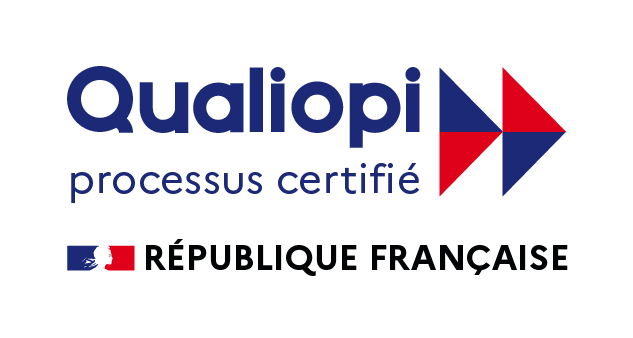It can’t be said often enough: the speed of change (primarily technological, but also societal, competitive…) is only accelerating. Against this backdrop, talent training has become a crucial issue for companies wishing to remain competitive and innovative. Investing in soft skills thanks to artificial intelligence (AI) can sustainably boost a company’s performance and profitability by contributing to the loyalty and commitment of its employees, especially its key personnel (communities of managers, sales people, experts and, of course, leaders).
While the benefits of training on the development of behavioral skills and employee commitment are well established, new challenges are emerging. In contexts of ever tighter budgets, what are the new levers for making training more effective and tailored to each individual’s specific needs? The answer lies in the combination of neuroscience and AI, enabling us to create learning experiences that are experiences and tailor-made¹ learning experiences..
Better targeting for better training thanks to reliable data
77% of employees² have difficulty identifying their training needs. That’s why it’s essential, upstream of training courses, to target needs of each learner. However, in this context of rapid change and relative indecision on the part of employees, declarative questionnaires are not enough.

Conversely, tools such as games coupled with sensors provide objective, behavioral and physiological data – based on indicators derived from research. This provides the basis for a development plan with solid, reliable datawhich is the sine qua non for real added value from AI.
From this data, AI can generate personalized, constructive and rewarding feedback that stimulates motivation and learning³. The challenge is to make make the learner aware resources and needs. This first step is key to ensuring the learner’s intrinsic commitment, otherwise the training, perceived as imposed by the company or as unnecessary, will lose much of its impact.
Personalize your journey with AI

Based on the accuracy of the data, the algorithm can then build a personalised personalized coursewith modules based on resource skills to meet individual⁴ objectives. AI-enabled soft skills training thus maximizes the effectiveness of training programs. This same type of algorithm, called next best action is already widely used in other areas of the company, such as marketing and customer relations, with proven results in terms of customer engagement and high-impact results.
The stakes are high, as a Deloitte study reveals that 75% of organizations believe that using data for their talent management processes is important, but only 8% think they have a good grasp of this practice⁵. Omind a modélisé the loss caused by the lack of personalization of training courses up to 74% of sunk L&D and talent budgets miss their target and fail to generate any tangible impact. Better personalization is therefore the key to controlling budgets.
So, are we embracing AI to personalize the training process? The results are in: companies that invest in training tailored to their employees are seeing a 12% increase in global productivity⁶ !
Effective learning
Discoveries in neuroscience shed light on the mechanisms that drive learning, notably through the multimodal model of “learning by doing”emphasizing the importance of pleasure and motivation⁷.
Video games, by releasing dopamine into the reward circuitand memorization⁸. Similarly serious gamesbased on scientific research, promote learning and memorization in a playful way. As Deborah Varoqui puts it, “It’s a tool that can offer improvement, re-education, learning or training. Even game consoles like the Wii are used to work on balance!” They can be used to reinforce individual or group learning, through real-life situations and interactive workshops that encourage balance. practical application in a professional context ⁹ .

At Omind, using similar methods, we measure a completion rate program completion rate of 90% (even in online programs!)demonstrating the commitment generated by this neuroscientific method.
Measuring impact & anchoring over time
Neuroscience teaches us that learning is a complex process, involving many regions of the brain. To optimize the development of soft skills, it is essential to understand how the brain learns and memorizes ¹⁰.
Information is processed differently by the brain, depending on the senses involved, moving from primary to associative areas. To optimize learning, we recommend stimulating several sensory channels, with an emphasis on the visual. For example, to remember a presentation, rehearse it aloud, act it out and imagine yourself presenting it ¹¹. .

AI, and in particular generative AI, opens up new possibilities for offering tailored adapted learning modulescombining theory and practice for long-term retention. This approach strengthens neural connections and facilitates the practical application of learning, with regular progress monitoring ¹². .
At Omind, programs include systematic impact measurement and an anchoring phase. On average, the results show 38-point increase in target skills, measured objectively in the games and a 43% improvement in learner objectives!

Using predictive data to adapt HR strategy
The possibilities of AI don’t stop at the learner path. With low-impact data, it’s easy to transpose algorithms to help Talent Managers, HR Development Managers and L&D Directors Managers in their vast task of compiling training and coaching needs.
By aggregating (and anonymizing!) the data, new information is revealed: What is the company’s managerial culture? Is it effective and in line with the company’s strategic project? On what subjects should we support our talents or future leaders, so that they are at the forefront of our sector’s transformation? Do I have a problem retaining diverse talent?
Thanks to predictive analyses transposed from research, it is now possible to answer these questions based on data from a group of supported talents or managers.

With this in mind, Omind has designed the co-pilot, a goldmine of intelligent talent. It’s a real decision-making aid for building development programs and adjusting their modalities: targeting coaching, identifying group training needs or other development needs such as mentoring or development on cross-functional missions…
Emerging tools offer training managers a global view of their team’s progress, collecting data on trends in absenteeism and turnover, essential for anticipating future needs.
The Omind key
Find out how Omind can optimize your company’s skills development. Our pedagogical programs, used by over 50 companies, have a proven impact of 38% to 43% on targeted skills and behaviorswith a 97% satisfaction rate.
Consult our training catalog and contact us for a personalized demo today.
Conclusion
Soft skills development training with AI using neuroscience offers benefits on several levels. Individually, they develop lasting skills, autonomy and self-confidence. Collectively, they improve communication, collaboration and team cohesion, creating a work environment conducive to innovation and performance.
By combining neuroscience and AIthese training courses become unique, engaging and effective. They stimulate the pleasure of learning, offer tailor-made support and promote collective synergy. This helps develop behavioral and relational skills, creating a virtuous circle where personal fulfillment feeds collective excellence. This is the key to ensuring that your key employees, managers, leaders, talents or sales teams perform sustainably and remain competitive in a constantly changing world.

¹ Adopted (2023, May 16). Cognitive Neuroscience & ; Business: How can this new science revolutionize business? Zenmon Drops. https://zenmondrops.com/neurosciences-cognitive-business/
² Database Omind (4,300 leaders), difference between questionnaire and measured responses > 20 points
³ Ramjaun, R. (2022, June 7). Neuroscience: new training methods? MyConnecting. https://www.myconnecting.fr/articles/neurosciences-methodes-formation/
⁴ Omind Neurotechnologies. (2023, August 30). Omind Neurotechnologies’ training programs for companies. https://www.omind.me/en/omind-neurotechnologies-training-solutions/
⁵ Deloitte Insights, “Global Human Capital Trends 2020.
⁶ Gwendomoreau (2023, December 8). Soft Skills, the key to attracting and retaining top talent. Zenmon Drops. https://zenmondrops.com/soft-skills/
⁷ Learnlight (2023, November 3). 7 ways to boost learning with neuroscience | Learnlight. https://www.learnlight.com/fr/articles/7-moyens-de-booster-lapprentissage-grace-aux-neurosciences/
⁸ Pardmin. (2022, September 28). Addiction and reward circuitry. Drogue : Aide et Référence.
⁹ Ebrx. (2024, March 22). The ultimate secret of talent management : Neuroscience for human resources – Green jobs for all. Emploi Vert Pour Tous. https://www.emploivertpourtous.fr/ressource-humaine/lultime-secret-de-la-gestion-des-talents-les-neurosciences-au-service-des-ressources-humaines/
¹⁰Svadchii, A. (2024, January 30). Training your brain with neuroscience.. Best Of Business Analyst. https://bestofbusinessanalyst.fr/entrainer-son-cerveau-grace-aux-neurosciences/
¹¹ Neuroscience neutralizes the “I didn’t learn anything from my training” (2023, July 19). Lefebvre Dalloz Compétences.https://formation.lefebvre-dalloz.fr/actualite/les-neurosciences-neutralisent-le-je-nai-rien-retenu-de-ma-formation
¹² Eliadis, A. (2024, February 19). The Neuroscience of Feedback: A Coaching Approach for development. Forbes.https://www.forbes.com/sites/forbescoachescouncil/2024/02/08/the-neuroscience-of-feedback-a-coaching-approach-for-development/?sh=58d9f898365e

